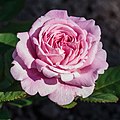Related Research Articles

Sir Walter Scott, 1st Baronet, was a Scottish historian, novelist, poet, and playwright. Many of his works remain classics of European and Scottish literature, notably the novels Ivanhoe (1819), Rob Roy (1817), Waverley (1814), Old Mortality (1816), The Heart of Mid-Lothian (1818), and The Bride of Lammermoor (1819), along with the narrative poems Marmion (1808) and The Lady of the Lake (1810). He had a major impact on European and American literature.

The Picture of Dorian Gray is a philosophical novel by Irish writer Oscar Wilde. A shorter novella-length version was published in the July 1890 issue of the American periodical Lippincott's Monthly Magazine. The novel-length version was published in April 1891.

The Scarlet Pimpernel is the first novel in a series of historical fiction by Baroness Orczy, published in 1905. It was written after her stage play of the same title enjoyed a long run in London, having opened in Nottingham in 1903.

Henry Mackenzie FRSE was a Scottish lawyer, novelist and writer sometimes seen as the Addison of the North. While remembered mostly as an author, his main income came from legal roles, which led in 1804–1831 to a lucrative post as Comptroller of Taxes for Scotland, whose possession allowing him to follow his interest in writing.
The redcap is a type of malevolent, murderous goblin found in Border folklore. He is said to inhabit ruined castles along the Anglo-Scottish border, especially those that were the scenes of tyranny or wicked deeds and is known for soaking his cap in the blood of his victims. He is also known as Redcomb and Bloody Cap.

Clan Scott is a Scottish clan and is recognised as such by the Lord Lyon King of Arms. Historically the clan was based in the Scottish Borders.

The Heart of Mid-Lothian is the seventh of Sir Walter Scott's Waverley Novels. It was originally published in four volumes on 25 July 1818, under the title of Tales of My Landlord, 2nd series, and the author was given as "Jedediah Cleishbotham, Schoolmaster and Parish-clerk of Gandercleugh". The main action, which takes place between September 1736 and May 1737, is set in motion by the Porteous Riots in Edinburgh and involves an epic journey from Edinburgh to London by a working-class girl to obtain a royal commutation of the death penalty incurred by her sister for the alleged murder of her new-born baby. Despite some negative contemporary reviews, some now consider it Scott's best novel.
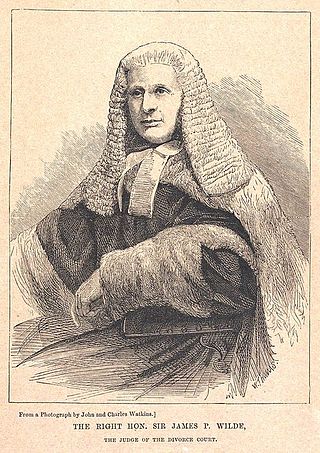
James Plaisted Wilde, 1st Baron Penzance, was a noted British judge and rose breeder who was also a proponent of the Baconian theory that the works usually attributed to William Shakespeare were in fact written by Francis Bacon.

Rosa'Violet Carson' is a salmon-pink rose cultivar, an uncommon hybrid of the red hybrid tea 'Mme Léon Cuny' and the orange floribunda 'Spartan', created by Samuel McGredy IV between 1963 and 1964. It was named after the English actress Violet Carson (1898–1983), who played Ena Sharples in the British soap opera Coronation Street.
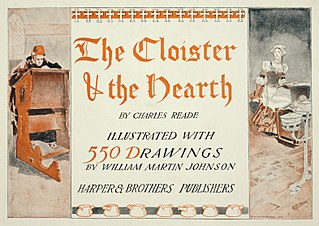
The Cloister and the Hearth (1861) is a historical novel by the British author Charles Reade. Set in the 15th century, it relates the travels of a young scribe and illuminator, Gerard Eliassoen, through several European countries. The Cloister and the Hearth often describes the events, people and their practices in minute detail. Its main theme is the struggle between man's obligations to family and to Church.

Clan Hannay is a Lowland Scottish clan.

Rosa 'Chrysler Imperial' is a strongly fragrant, dark red hybrid tea rose cultivar. This variety was bred and publicly debuted by Dr. Walter E. Lammerts of Descanso Gardens, La Cañada Flintridge, California, US in 1952. Its stock parents 'Charlotte Armstrong' and 'Mirandy' are both 'All American Rose Selections'-roses.
W. Kordes' Söhne is a German rose breeding company in Klein Offenseth-Sparrieshoop in Schleswig-Holstein, Germany. The company is one of the world's leading rose breeders and producers for cut roses and garden roses, annually selling worldwide more than two million rose plants at retail and wholesale. Each year, more than 50,000 new crosses of garden roses and cut roses are tested, leading to four to six marketable varieties after a trial period of eight to ten years.
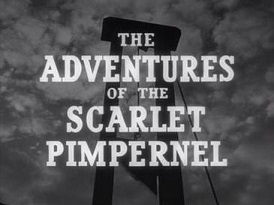
The Adventures of the Scarlet Pimpernel is a British television series based on the 1905 adventure novel of the same name by Baroness Emmuska Orczy. The series was created by writer Michael Hogan and produced by the Towers of London for Incorporated Television Programmes. It was first screened in Britain in 1955 to 1956 in an eighteen-episode run beginning on 28 September 1955. It was one of the first drama series shown on the fledging network, which had only begun transmission in London the week before.
This is an incomplete list of music based on the works of Oscar Wilde.
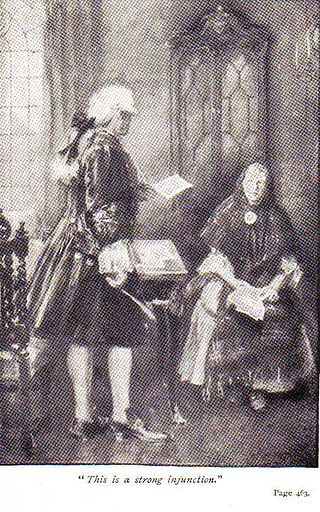
Jeanie Deans is a fictional character in Sir Walter Scott's novel The Heart of Midlothian first published in 1818. She was one of Scott's most celebrated characters during the 19th century; she was renowned as an example of an honest, upright, sincere, highly religious person. The name "Jeanie Deans" was given to several pubs, ships, railway locomotives, an opera, a play, a poem, a song, a hybrid rose, an antipodean potato, and a geriatric unit in a hospital. They all take their name from Scott's heroine. There was also a so-called Jeanie Deans' Cottage in Edinburgh. It was demolished in 1965.
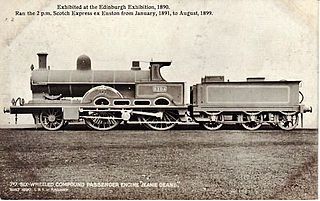
Jeanie Deans was the name given to at least two railway locomotives naming them after the fictional character, Jeanie Deans, who featured in Sir Walter Scott's novel, Heart of Midlothian.
Jeanie Deans is a play written by Dion Boucicault based on Sir Walter Scott's 1818 novel, The Heart of Midlothian. It is named after the heroine of the novel, Jeanie Deans.

Olive Fitzhardinge (1881–1956) was an Australian rose breeder, the first to patent her work. Her four surviving roses are held in Australian collections. Her roses were well received in the 1930s but after the Second World War favoured styles of roses changed significantly.
References
- ↑ Cf. "Rose Gathering: Walter Scott, Lord Penzance and Roses" at http://www.rosegathering.com/penzance.html Retrieved 2012-01-28
- ↑ See this 'Help Me Find' website: http://www.helpmefind.com/gardening/l.php?l=2.17396.1 helpmefind: 'Jeanie Deans' Retrieved 2012-10-23. Also, Rose G. Kingsley, Roses and Rose Growing, London: Whittaker & Co., 1908, p. 44. Available online in the Project Gutenberg: https://www.gutenberg.org/files/33464/33464-h/33464-h.htm Retrieved 2012-10-23.
- ↑ See, for example, http://hortiplex.gardenweb.com/plants/p1/gw1091109.html and http://www.vintagegardens.com/roses.aspx?cat_id=12 Retrieved 2012-10-23
